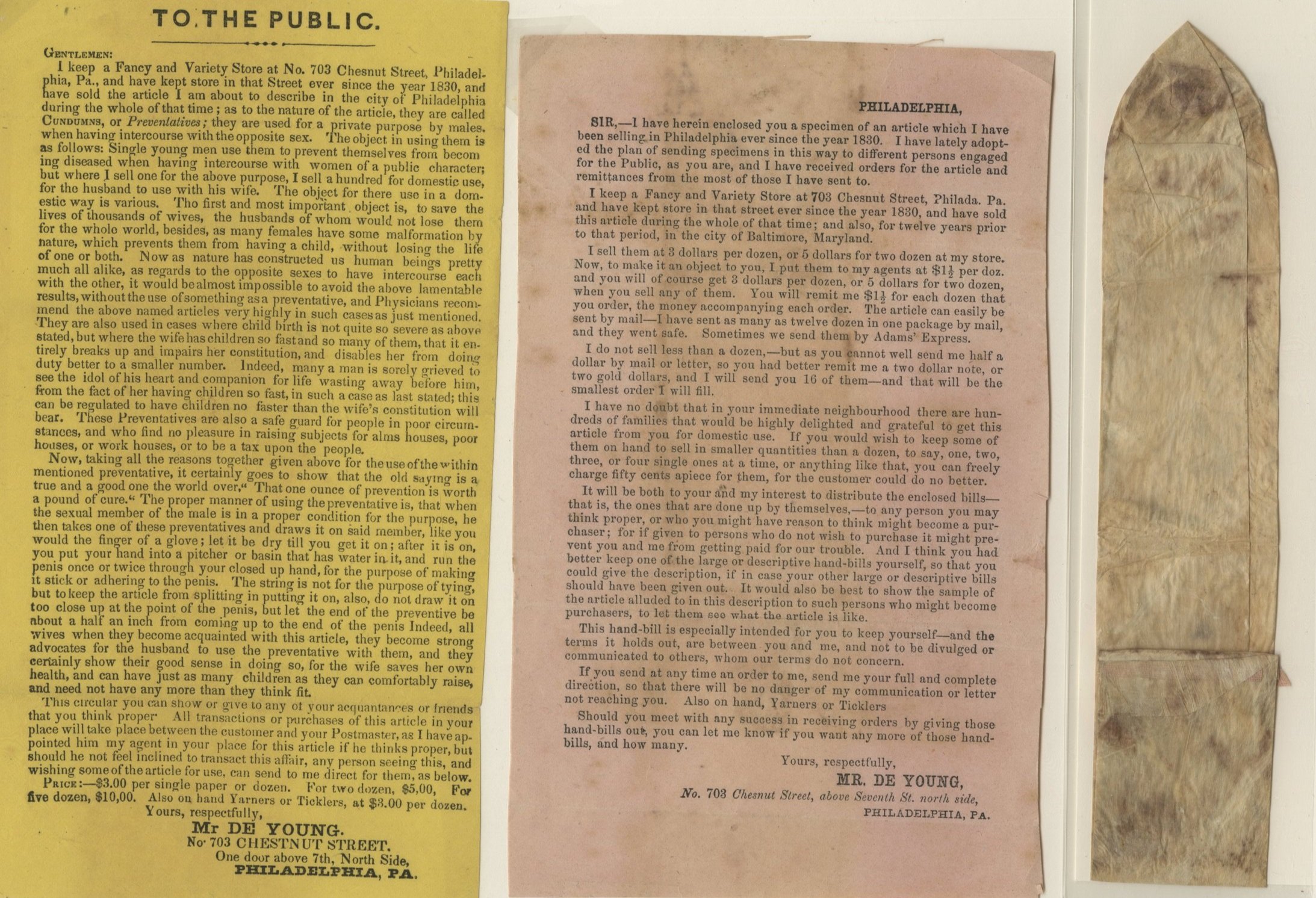 Image 1 of
Image 1 of

Condoms from Civil War Era with Handbills on Salesman’s Sample “preventative”
“as to the nature of the article, they are called CUNDUMNS, or Preventatives; they are used for a private purpose by males, when having intercourse with the opposite sex…. Single young men use them to prevent themselves from being diseased when having intercourse with women of a public character; but where I sell one for the above purpose, I sell a hundred for domestic use, for the husband to use with his wife.”
Condoms made from intestines or bladder were used as early as 3000 BC. Despite the explosion of venereal disease during and after the Civil War, the Comstock Act of 1873 made it illegal to send “obscene, lewd or lascivious,” “immoral,” or “indecent” products and publications through the mail or across state lines, prohibiting anything related to contraception as “designed, adapted, or intended for obscene or abortion-causing purposes.”
In World War I, the Allied armies (unlike the Germans) did not make condoms available to their armies, so syphilis and gonorrhea spread widely. In the 1920s, the invention of latex transformed condoms, as did the ability to add lubrication with spermicide. After U.S. Customs officials confiscated a shipment from Japan of diaphragms mailed to a doctor in New York, in 1936 The United States v. One Package of Japanese Pessaries ruled that that the Comstock Act could not be used to interfere with legal medical practice. The mailing of contraception materials “for medical purposes” was legal again.
During World War II, the American army deployed condoms for their soldiers but the lack of public concern about venereal disease and the discovery of penicillin limited their use. In 1965, the Supreme Court ruled in Griswold v. Connecticut that it was unconstitutional for the government to prohibit married couples from using birth control. In 1971, Congress removed the reference to contraceptives from the Comstock Act, but much the rest of the Act was left in place. In 1972, Griswold protection was extended to unmarried couples, in effect legalizing heterosexual premarital sex. In 1973, Roe v Wade allowed abortion until a fetus becomes viable.
In 2022, the Supreme Court’s divided Dobbs decision overturned Roe, for the first time in American history removing previously agreed rights. Foes of abortion also began to talk about reimposing Comstock Act prohibitions of contraception.

★ [CONTRACEPTION] Handbill circulars by Philadelphia: De Young: owner of “a Fancy and Variety Store at 703 Chestnut Street, Philada.” since 1830, discussing the dangers women face in childbirth and reasons to limit procreation. With a very rare condom sample, and envelope addressed “To the Postmaster of Denny. Warren Co. Illinois.” All ca 1860s. #27474
